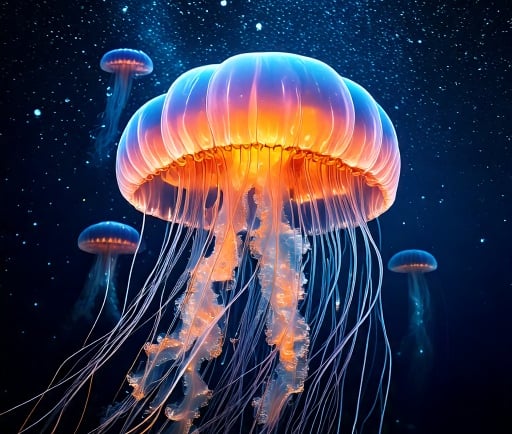Jellyfish Galaxies: The Ram Pressure Stripping Process


Introduction to Jellyfish Galaxies
In the vast expanse of the universe, jellyfish galaxies emerge as a fascinating phenomenon within the field of astrophysics. These unique galaxies are not only captivating in appearance but also provide significant insights into the interactions occurring within galaxy clusters. As we delve into the intricacies of jellyfish galaxies, it becomes clear that their formation is closely linked to a process known as ram pressure stripping.
The Mechanics of Ram Pressure Stripping
Ram pressure stripping is a critical process that occurs when a galaxy traverses through the dense intergalactic medium of a galaxy cluster. As these galaxies move at significant velocities, they encounter a headwind of gas which exerts pressure on their stellar components. This interaction often results in the stripping away of gas and dust, leading to distinctive features commonly associated with jellyfish galaxies.
The tail-like structures observable in jellyfish galaxies are direct consequences of this striping action. The high-speed motion of the galaxy essentially creates a ‘jellyfish’ tail, leaving behind a trail of ejected gas. It is this visual resemblance to jellyfish that gives these galaxies their evocative name. The stripped gas can continue to be a source of star formation in adjacent regions, showcasing the duality of destruction and creation within cosmic environments.
Significance of Jellyfish Galaxies in Astrophysics
Jellyfish galaxies serve as crucial indicators of the dynamics and evolution of galaxies within clusters. Their study allows researchers to better understand the lifecycle of galaxies and the influence of their surroundings on their development. By analyzing the various stages of ram pressure stripping, scientists garner insights into how environmental conditions shape the characteristics of galaxies over time.
Moreover, jellyfish galaxies provide a platform for examining the role of gas in galaxy formation. As the stripped material disperses into the intergalactic medium, it can contribute to the baryonic content of surrounding galaxies. In turn, this influences subsequent star formation processes, establishing a cyclical relationship between galaxies and their environments.
In conclusion, the study of jellyfish galaxies is more than an aesthetic observation; it opens doors to understanding the complex interactions that govern the universe. Through ram pressure stripping, these galaxies become key players in the cosmic ballet, illustrating how galaxies evolve and adapt in response to their galactic environment. As research continues, it is certain that jellyfish galaxies will remain a tantalizing subject in the ongoing exploration of astrophysical phenomena.
